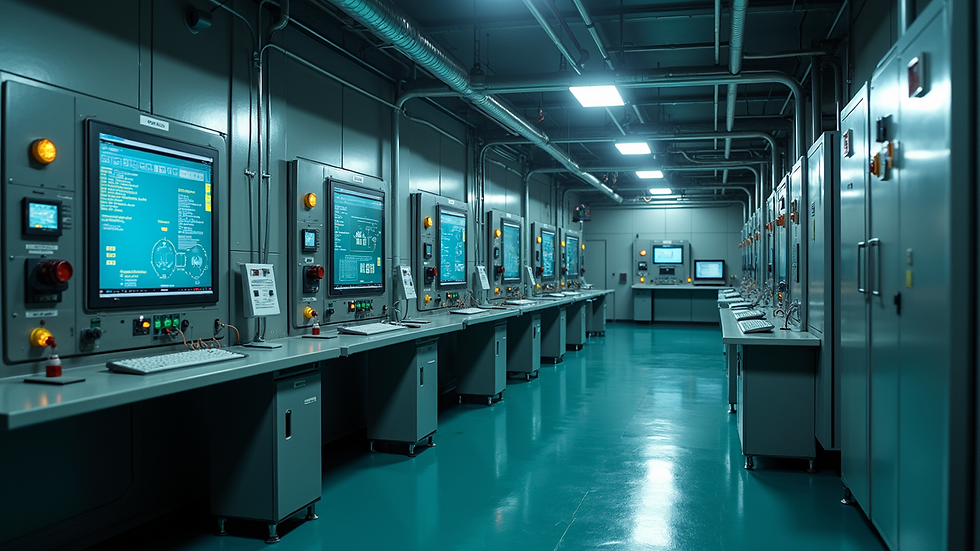Enhance Efficiency with Cutting-Edge Sewage Treatment Techniques
- karan9377
- Aug 18
- 4 min read
Sewage treatment is a critical process that ensures the safe disposal and recycling of wastewater. With increasing urbanisation and industrial growth, the demand for efficient sewage treatment has never been higher. Modern sewage treatment methods are designed to improve the quality of treated water, reduce environmental impact, and optimise operational costs. This article explores the latest techniques and technologies that enhance efficiency in sewage treatment plants.
Understanding Modern Sewage Treatment Methods
Modern sewage treatment methods combine traditional processes with innovative technologies to achieve higher treatment efficiency. These methods focus on removing contaminants, pathogens, and harmful chemicals from wastewater before releasing it back into the environment or reusing it.
Some of the key modern techniques include:
Membrane Bioreactors (MBR): These systems use membranes to separate solids from liquids, providing superior filtration and reducing the footprint of treatment plants.
Advanced Oxidation Processes (AOP): AOPs use powerful oxidants like ozone or hydrogen peroxide to break down complex organic pollutants.
Biological Nutrient Removal (BNR): This method targets nitrogen and phosphorus removal through controlled biological processes, preventing eutrophication in water bodies.
Anaerobic Digestion: This process breaks down organic matter in the absence of oxygen, producing biogas that can be used as renewable energy.
By integrating these methods, treatment plants can achieve better water quality, lower energy consumption, and reduced sludge production.

Benefits of Implementing Modern Sewage Treatment Techniques
Adopting modern sewage treatment methods offers numerous advantages for municipalities, industries, and the environment:
Improved Water Quality: Enhanced removal of contaminants ensures that discharged water meets stringent regulatory standards.
Energy Efficiency: Technologies like anaerobic digestion generate renewable energy, reducing operational costs.
Space Saving: Compact systems such as MBRs require less land area, making them ideal for urban settings.
Reduced Environmental Impact: Effective nutrient removal prevents water pollution and protects aquatic ecosystems.
Resource Recovery: Treated water can be reused for irrigation, industrial processes, or groundwater recharge, promoting sustainability.
For example, a city upgrading its sewage treatment plant with membrane bioreactors reported a 40% reduction in sludge volume and a significant decrease in energy consumption. This not only lowered costs but also improved compliance with environmental regulations.
What are the 5 stages of sewage treatment?
Sewage treatment typically involves five key stages, each designed to progressively remove contaminants and prepare wastewater for safe discharge or reuse:
Preliminary Treatment: This stage removes large solids, debris, and grit through screening and sedimentation. It protects downstream equipment from damage.
Primary Treatment: In this phase, suspended solids settle out in sedimentation tanks, reducing the organic load.
Secondary Treatment: Biological processes, such as activated sludge or biofilm reactors, break down dissolved organic matter using microorganisms.
Tertiary Treatment: Advanced filtration, disinfection, and nutrient removal occur here to polish the water and eliminate pathogens.
Sludge Treatment: The by-products from earlier stages are treated through digestion, dewatering, and disposal or reuse.
Each stage plays a vital role in ensuring the overall effectiveness of the sewage treatment process.

Integrating Technology for Enhanced Sewage Treatment
The integration of digital technologies and automation has revolutionised sewage treatment operations. Smart sensors, real-time monitoring, and data analytics enable operators to optimise processes and respond quickly to changes in wastewater characteristics.
Key technological advancements include:
IoT Sensors: These devices monitor parameters like pH, turbidity, and dissolved oxygen continuously, providing valuable data for process control.
Automated Control Systems: Programmable logic controllers (PLCs) adjust aeration, chemical dosing, and sludge removal based on sensor inputs.
AI and Machine Learning: Predictive models help forecast treatment performance and maintenance needs, reducing downtime.
Remote Monitoring: Operators can oversee multiple plants from a central location, improving efficiency and reducing labour costs.
By leveraging these technologies, treatment plants can maintain consistent water quality, reduce energy use, and extend equipment lifespan.
Practical Recommendations for Upgrading Sewage Treatment Plants
For facilities looking to enhance their sewage treatment efficiency, consider the following actionable steps:
Conduct a Comprehensive Audit: Assess current plant performance, identify bottlenecks, and evaluate compliance with regulations.
Invest in Advanced Technologies: Explore options like membrane bioreactors, advanced oxidation, or nutrient removal systems tailored to your wastewater profile.
Implement Automation: Introduce sensors and control systems to enable real-time monitoring and process optimisation.
Train Staff: Ensure operators are skilled in managing new technologies and interpreting data for decision-making.
Plan for Resource Recovery: Incorporate systems for biogas production, water reuse, and sludge valorisation to improve sustainability.
Engage with Experts: Collaborate with technology providers and consultants to design customised solutions.
For more detailed insights on advanced sewage treatment, exploring expert blogs and case studies can provide valuable guidance.

Moving Towards Sustainable Water Management
Efficient sewage treatment is a cornerstone of sustainable water management. By adopting modern sewage treatment methods, communities can protect public health, conserve water resources, and reduce environmental pollution. The future of wastewater treatment lies in combining innovative technologies with smart management practices to create resilient and eco-friendly systems.
Investing in these advancements not only addresses current challenges but also prepares infrastructure for growing populations and climate change impacts. Embracing modern sewage treatment techniques is a proactive step towards a cleaner, healthier environment for generations to come.



Comments